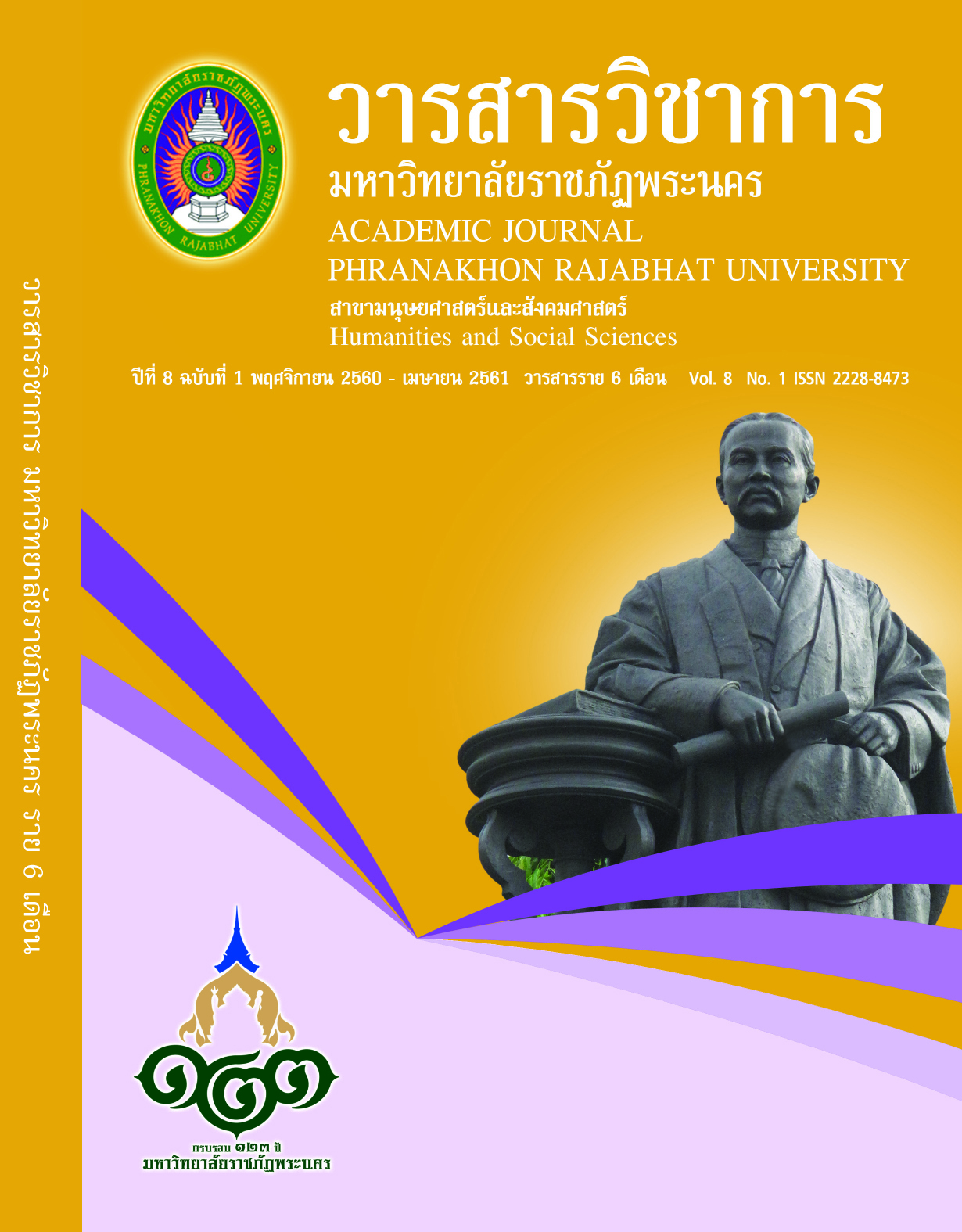วิเคราะห์เปรียบเทียบ บทบาทการเกี้ยวพาราสีในการแสดงละครนอก เรื่องพระอภัยมณี
Keywords:
Courtship Role plays, Lakorn Nok, Phra Abhai ManiAbstract
The purposes of this research were to study: 1) the roles and patterns of courtship in Phra Abhai Mani, a Lakorn Nok play, between Phra Abhai Mani and the (converted) giantess following the formation of Teacher Lamul Yamakup, and between Phra Abhai Mani, the mermaid and Lawengwanla by the pattern of Thanpuying Paew Sanithwongseni. 2) comparative analysis of the courtship role plays Elements of the show And dance postures in the Lakorn Nok Phra Abhai Mani.
The results were as follows: 1) there are two categories of courtship patterns in the dramatic performance: the sitting and standing courtship postures. The dancing postures are accompanied by Naphat, lyrics and dialogues. 2) The dance movements by courtship in the Lakorn Nok, Phra Abhai Mani are differentiated due to the roles of the characters e.g. the courtship between Phra Abhai Mani and the ocean giantess are composed of the dancing movements in accordance with the traditions of Thai dance preforming art. The courtship dancing gestures are in close contacts, which are significantly special e.g. the courtship followed by the lyrics. The heroine (female character) approaches, courts, seduces and invites the hero (male character). The courtship is going to be accompanied by Naphat, Lom Song and Tranon Song. The female character performs the courtship to the male character: moving towards the male character, fondling his chin, rubbing his thigh, hugging him and sitting on his lap. On the contrary, the courtship between Phra Aphai Mani and the mermaid is characterized as the eye-contact courtship. The dancing gestures follow the roles according to the language of the dancing performance in the lyrics. The postures demonstrate emotions, countenances and eye sights to show affection and shyness. The courtship between Phra Abhai Mani and Lawengwanla is the lyrical or verbal courtship. The dance postures of the male character are characterized in accordance with the lyrics and dialogues. The dance gestures were invented according to the script and the characters. The dance postures of the female character are influenced by the western dance performing art combined with the natural human gestures.
References
ปรียารัตน์ เชาวลิตประพันธ์. (2549). การสมพาสที่ผิดธรรมชาติในนิทานไทย การศึกษา อนุภาคทาง คติชนวิทยา. โครงการเผยแพร่ผลงานวิชาการ คณะอักษรศาสตร์ จุฬาลงกรณ์มหาวิทยาลัย.
พัชราวรรณ ทับเกตุ. (2544). หลักการแสดงของนาง เกศสุริยงแปลงในละครนอกเรื่องสุวรรณหงส์. วิทยานิพนธ์ ศิลปศาสตรมหาบัณฑิต สาขานาฏยศิลป์ไทย จุฬาลงกรณ์มหาวิทยาลัย.
มณีรัตน์ มุ่งดี. (2554). บทบาทและลีลาของนางละเวงในการแสดงละคร. วิทยานิพนธ์ศิลปะศาสตรมหาบัณฑิต สาขานาฏยศิลป์ไทย จุฬาลงกรณ์มหาวิทยาลัย.
สุวรรณา เกรียงไกรเพ็ชร์. (2549). พระอภัยมณี : การศึกษาในเชิงวรรณคดีวิจารณ์. กรุงเทพฯ: โครงการจัดพิมพ์หนังสือสำหรับประชาชน สมาคมห้องสมุดแห่งประเทศไทย.
Downloads
Published
How to Cite
Issue
Section
License
"บทความวิชาการในวารสารฉบับนี้ ถือเป็นความรับผิดชอบของผู้เขียนเท่านั้น"
สงวนลิขสิทธิ์ตามพระราชบัญญัติลิขสิทธิ์




